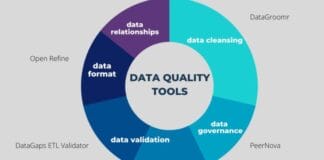Introduction
Embarking on the journey from raw data to actionable insights involves a critical process: Data Processing and Transformation. This blog delves into the essential steps and techniques involved in transforming raw data into valuable insights. We’ll explore the significance of each stage in the data processing pipeline, enriched with real-time examples, to guide you in effectively managing and interpreting your data.
Our focus keyword, ‘Data Processing and Transformation’, is central to this discussion, offering insights into how data is refined and analyzed to inform decision-making. As we navigate through the complexities of data processing, we will ensure a comprehensive understanding of these vital techniques.
The Fundamentals of Data Processing
Data processing is a series of operations that convert raw data into a more usable format. It involves stages such as data collection, cleaning, transformation, and analysis. The goal is to extract meaningful information that can drive insights and inform decisions.
- Stages of Data Processing: Collection, cleaning, transformation, and analysis.
- Importance: Essential for ensuring data quality and reliability.

Real-time example: A retail company collects customer data, cleanses it for inconsistencies, transforms it into a structured format, and analyzes it to understand purchasing patterns.
Data Cleaning and Preparation
Data cleaning and preparation are crucial steps in data processing. This phase involves removing errors, inconsistencies, and irrelevant data, ensuring the dataset’s quality and accuracy. Proper data preparation sets the foundation for effective analysis and insights.
- Techniques: Removing duplicates, handling missing values, and data normalization.
- Benefits: Improves data quality, enhances analysis accuracy.
Real-time example: A healthcare organization cleans patient data by removing duplicates and filling missing values to ensure accurate medical research and analysis.
Transforming Data into a Structured Format

Transforming data into a structured format is a pivotal step in data processing. It involves converting raw data into a format that is suitable for analysis. This step often includes categorizing, sorting, and aggregating data to make it more manageable and insightful.
- Key Processes: Data categorization, sorting, and aggregation.
- Objective: To make data analysis-ready and more accessible for deriving insights.
Real-time example: A marketing firm aggregates customer data into different segments based on demographics and purchasing behavior for targeted advertising campaigns.
Data Analysis Techniques
Data analysis is the process of examining, modeling, and interpreting data to extract insights. It involves various techniques ranging from statistical analysis to complex data mining and predictive modeling. The choice of technique depends on the nature of the data and the insights sought.
- Techniques: Statistical analysis, data mining, predictive modeling.
- Applications: Used in market research, financial forecasting, and customer behavior analysis.
Real-time example: Financial analysts use predictive modeling to forecast market trends and guide investment strategies.

The Role of Technology in Data Processing and Transformation
Technology plays a significant role in data processing and transformation. Advanced tools and software have made it easier to handle large volumes of data, automate processes, and apply complex analytical techniques. The integration of AI and machine learning is further revolutionizing this field, enabling more sophisticated data analysis and insights.
Real-time example: E-commerce platforms use machine learning algorithms to process and analyze customer data, providing personalized shopping recommendations.
Conclusion
In conclusion, Data Processing and Transformation is a vital journey that turns raw data into meaningful insights. Each step, from data cleaning to analysis, plays a crucial role in ensuring the accuracy and usefulness of the final insights. As technology continues to evolve, the efficiency and capabilities of data processing and transformation will only enhance, offering more profound and actionable insights for businesses and researchers alike.
This comprehensive guide has provided an in-depth look into the process of transforming raw data into valuable insights, highlighting the importance of each stage and the role of technology in modern data processing.




Reviewed by 1 user
Advanced data science and Ai course
“Thank you for sharing your knowledge. This is a great article! I truly appreciate the insights you’ve provided. Keep up the excellent work!”
In today’s world,data science are at their peak of importance.
Enhance your data science skills with 1stepGrow, the best online learning platform.advanced data science and ai course